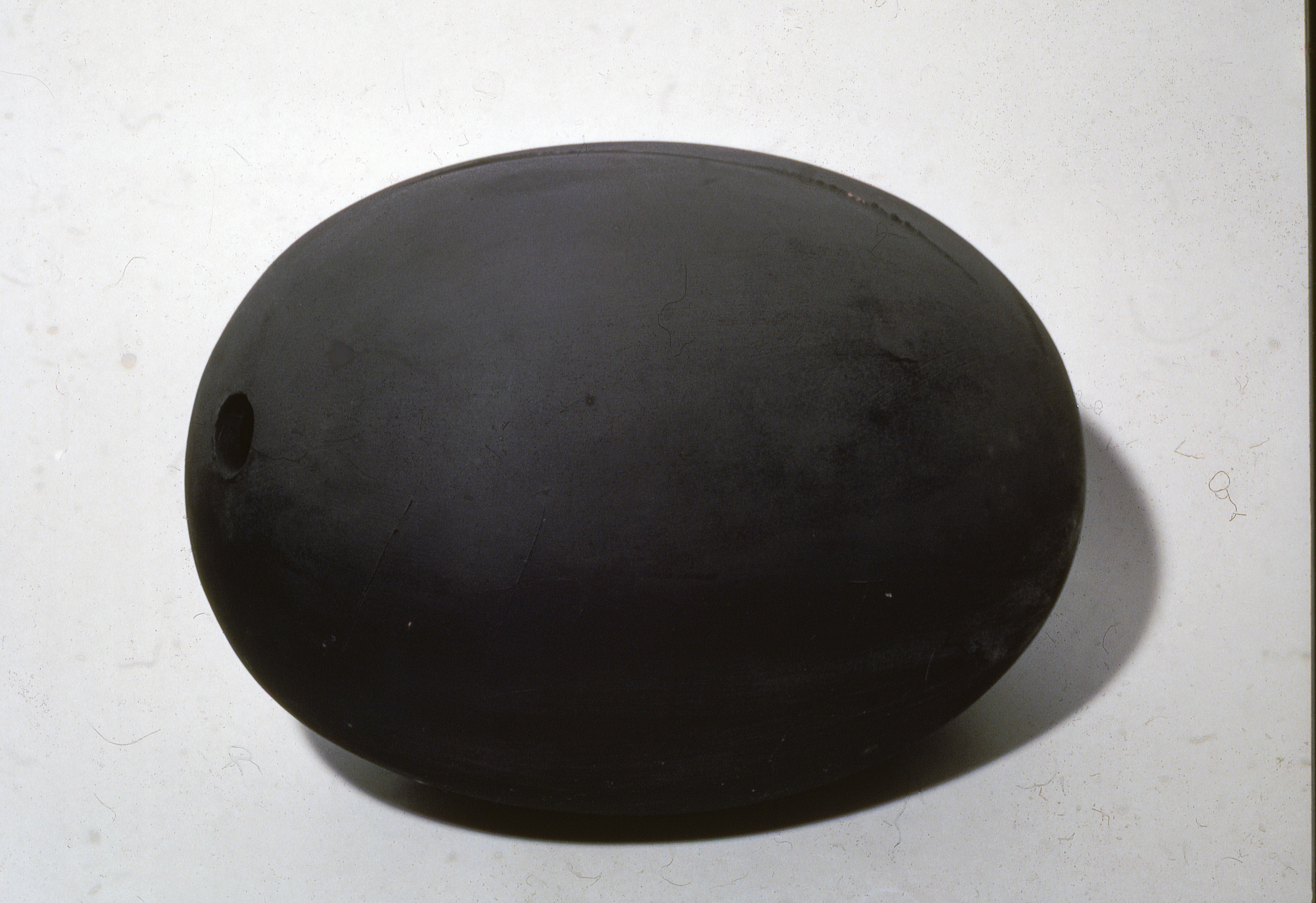
Click here to view image
Uovo nero orizzontale
Maria Cernuschi Ghiringhelli 1990
Fontana, Lucio
626
Unità di misura: cm; Altezza: 21; Larghezza: 31; Profondità: 22
Terracotta with hole and cut, 21 x 31 x 22 cm
Centro internaz. di ric. estet. casa del Tasso, TO - 1962<br>Astrattismo in Italia nella raccolta Cernuschi Ghiringhelli - Villa Croce, Genova - 1985
Uovo nero orizzontale shows Lucio Fontana's interest in a ductile material like ceramics and his connection to the Albisola environment, where he lived in the late 1940s. In Albisola the artist had a small studio from 1947 to 1960 in Pozzo Garitta and used to frequent the Mazzotti manufactory. This sculpture, along with the work Piatto savonese were exhibited in the museum's first opening exhibition in February 1985; the Uovo was connected to the Nature series and was set up with its vertical twin, then in Gio Pomodoro's collection. These two works (Piatto Savonese and Uovo nero orizzontale) were called the “Virginie” by the artist and bear, engraved on the patinated terracotta, the well-known sign-gesture, the artist's stylistic signature.




